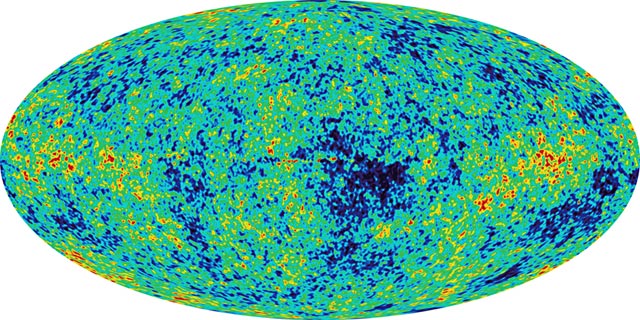“As a chapter in the continuing history of opposition to dissent, Oppenheimer‘s fate is especially worth re-exploring now. Whether in the closed halls of the intelligence services or in the open sessions of Congress, we need the hard impact of contestation; we need recalcitrant voices ready to challenge the established terms of discussion…Oppenheimer always thought that argued dissent was an inseparable part of patriotism. He was right.” In his review of the recent biography American Prometheus, Harvard’s Peter Galison lauds J. Robert Oppenheimer’s patriotic vision of reflective dissent.
Tag: Physics
In Search of M.
“String theory, the Italian physicist Dr. Daniele Amati once said, was a piece of 21st-century physics that had fallen by accident into the 20th century. And, so the joke went, would require 22nd-century mathematics to solve.” The New York Times surveys string theory at 20…fascinating stuff, but I still don’t get it.
Riddles in the Dark.
In celebration of a quarter-century of Science Times, the paper ruminates on the 25 questions currently driving science, while Alan Lightman ponders the motivations that fuel scientists. I’m not sure if the likes of Stephen Hawking are really contemplating Atlantis, but there’s some intriguing stuff here.
Worth a Thousand Answers.

Big news and bold statements are issuing forth from Greenbelt, MD. “We’ve now laid the cornerstone of a unified cosmic theory…We have not answered all the questions. But we’ve certainly turned a corner.” Thanks to NASA and the Wilkinson Microwave Anisotropy Probe (WMAP), scientists now have visual evidence of the universe’s origins with which to test out all the prevailing cosmological theories. Great news! Not only is any new empirical data in this field a boon to science, but, if ridiculous amounts of new information are gleaned from just this one little probe…well, it won’t help NASA in the manned space department, but the agency could still use a few unmitigated victories these days. On another note, looking at this map brings back some old memories. For my high school science thesis (required at SCGSSM), I used similar COBE DMR data to figure out that early galaxies displayed a fractal distribution. (Hey, it was the early ’90’s – fractals were the rage.) I wonder if this new data bears out that old rinky-dink thesis.
Ghosts in a Machine.
Particle physicists plan to build a “neutrino factory” in the UK. I almost spent a summer in high school searching for neutrinos in a Spanish mine (as part of a mandatory science thesis), until at the last minute I switched to an astrophysics project instead. Examining cosmic background radiation for fractal patterns…very trendy at the time.
Schroedinger’s Universe.
Discover interviews physicist John Wheeler about the quantum nature of reality. “Wheeler conjectures we are part of a universe that is a work in progress; we are tiny patches of the universe looking at itself – and building itself. It’s not only the future that is still undetermined but the past as well. And by peering back into time, even all the way back to the Big Bang, our present observations select one out of many possible quantum histories for the universe.” (Via Anil Dash.)
Paradigm shift.
Atomic clocks in space might prep the way for post-Einstein revisions to the laws of physics.
